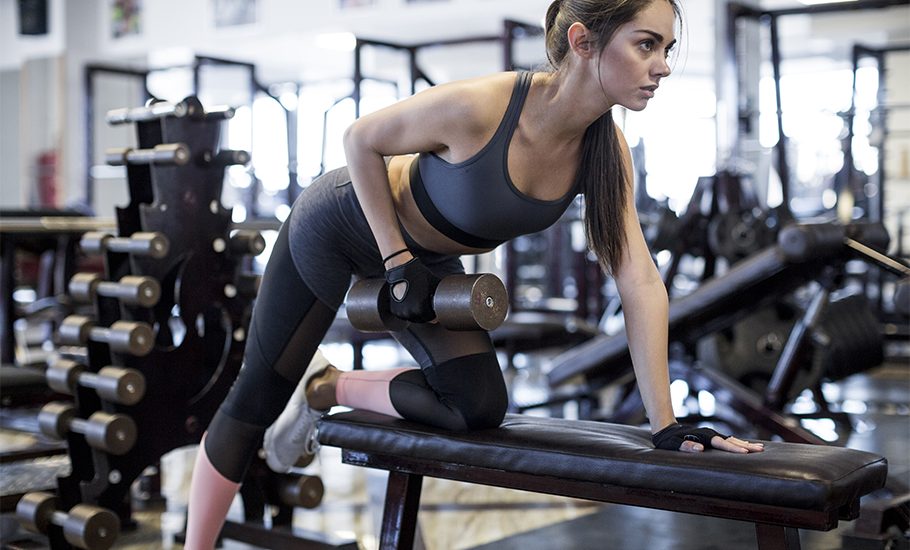Are you looking for a full body training plan that you can implement immediately?
Preferably without having to regularly make pilgrimages to the gym?
So without any complex devices …
Then your search is over here.
In the first article on the subject of full-body training, I already told you which bodyweight training exercises I recommend as basic exercises to start with.
There are the following 6 exercises:
- Squat
- Push-ups
- Reverse bench press
- Bridge
- Leg lifter
- Squat-stretch jump
With it you cover pulling and pushing upper body movements, do something for your core and back and, in addition to strengthening your legs, even have an endurance component on board.
All of this without overwhelming yourself with too many exercises.
As mentioned: There are only 6 of them!
Only: What use are the best exercises if they are far too difficult or far too easy for you?
Exactly: Nothing!
That’s why in my P.A.T. Bodyweight training complete package also contains at least 5 levels for each of these exercises – and many more exercises – so that you are guaranteed to be challenged, but not over- or under-challenged.
For this article I have selected two levels for you – one easy and one difficult variant of the exercise – so that you can start your training with it.
Full-body training plan – 10 variables to watch out for!
Before we get into the actual full body training plan, let’s take another look at how you can create a good full body training plan.
I paid attention to that:
- Exercise selection
- Exercise order
- Focus orientation
- Training frequency
- Scope
- Training load
- Intensity
- Density
- Speed of execution
- Periodization
Sounds like a lot at first …
Well, it is at the beginning too, but don’t worry, I have already done most of the work for you with the following full-body training plan.

The exercises for your full body training plan in two levels of difficulty
As promised, I have prepared two levels – easy and difficult – for your whole body training plan.
So that you can start right away, no matter what level you are at the moment.
1. Squat
You only do the simple variant in the classic way until your thighs are roughly parallel to the floor.
You do the difficult variant all the way down (deep squat) and then jump on it. This helps you to fully exhaust the strength of your thighs even without weights, without having to switch to one-legged variants such as the pistol squat.
2. Push-ups
You do the simple variant on a stable table. You put your hands on the table and do a push-up there.
You do the difficult variant in the classic way on the ground. If this is still too easy for you, you can do the repetitions very slowly or change your hand position (e.g. Diamond Pushup – the index finger and thumb of your hands form the shape of a diamond when you put them on the floor)
3. Reverse bench press
The simple variant is done with your legs bent so that you only have to pull a little weight up.
On the other hand, you do the difficult variant with straight, raised legs. This puts more weight on your arms.
A pulling exercise for the upper body should definitely not be missing in any full-body training plan.
4. Bridge
In the simple variant of the bridge, you sit long on the floor and then lift your body upwards by lifting your hips into extension.
The difficult variant is pressing from the supine position into the gymnastics bridge. Very demanding!
5. Leg lifter
In the simple variant, you lie on your back and lift your legs in a bent position.
The difficult variant works with stretched legs. Make sure you have a stable lower back here. You should always have your core tense during this exercise so that you avoid an excessively strong wooden cross!
6. Squat-stretch jump
The cardio component of the basic exercises.
The simple variant helps through increased variants. That means you don’t jump, but climb from one position to the other. So put your hands on the floor, first one leg back, then the second. You are now standing in the support and immediately step forward again, first one leg again, then the other. Then stand up without jumping and stretch your arms up.
The difficult variant is the classic squat-stretch jump. You go down, put your hands on, jump back into the support, jump forward again and then do a straight jump up.
The training methods in the full body training plan
So that you can properly challenge your whole body, you not only need suitable bodyweight exercises, but also training methods that are tailored to them.
To give you an insight, I would like to briefly introduce you to the training methods used in the full-body training plan:
- Level intervals
Are a good method for experienced beginners to get used to bodyweight training. - Circle intervals
Metabolic Training at its best – you will really stimulate your metabolism! - Overload method
The standard training method for strength training. You train in several sets. - HIIT
The high-intensity interval training is especially recommended for endurance training. - Bonus
Let yourself be surprised. In any case, it will be a challenge.







